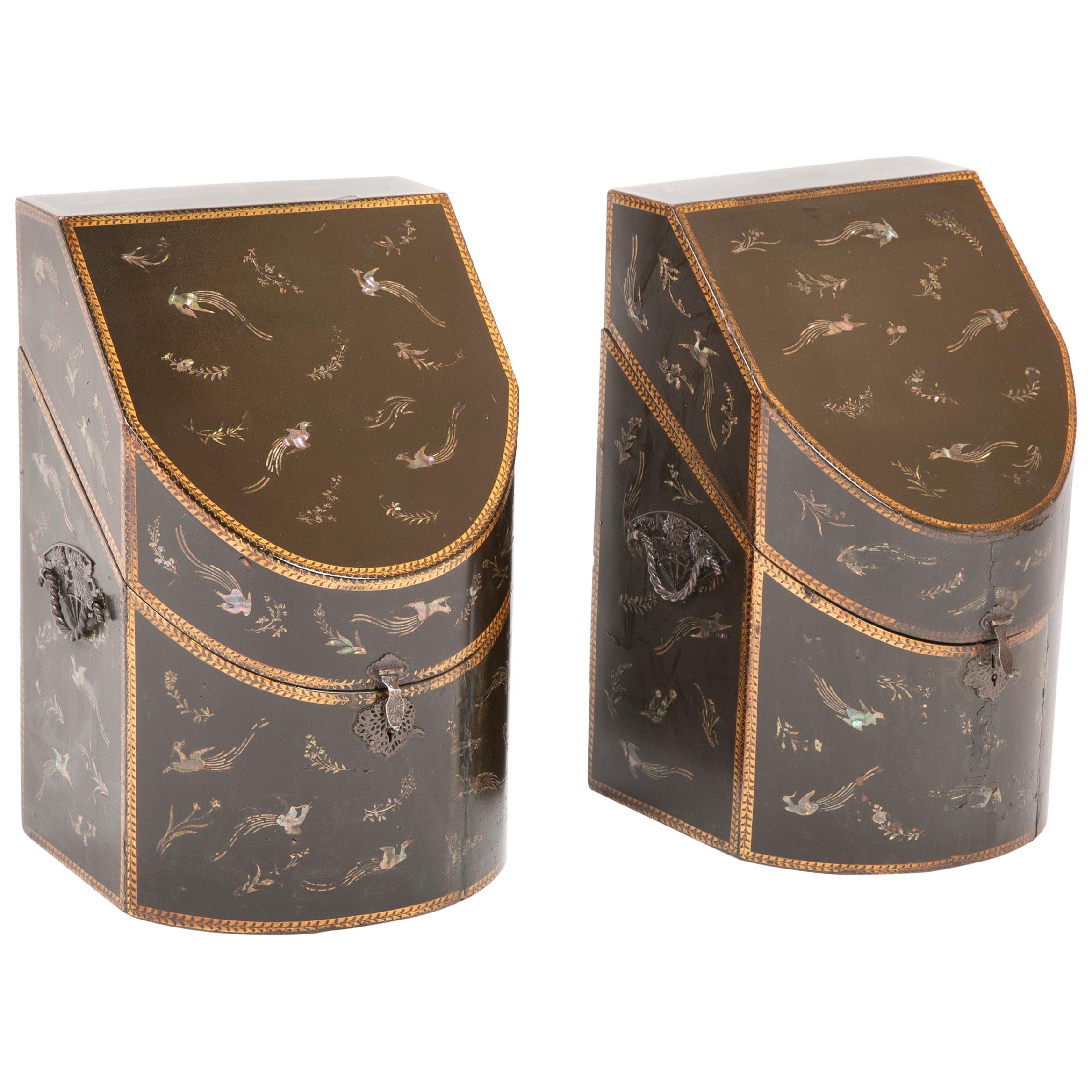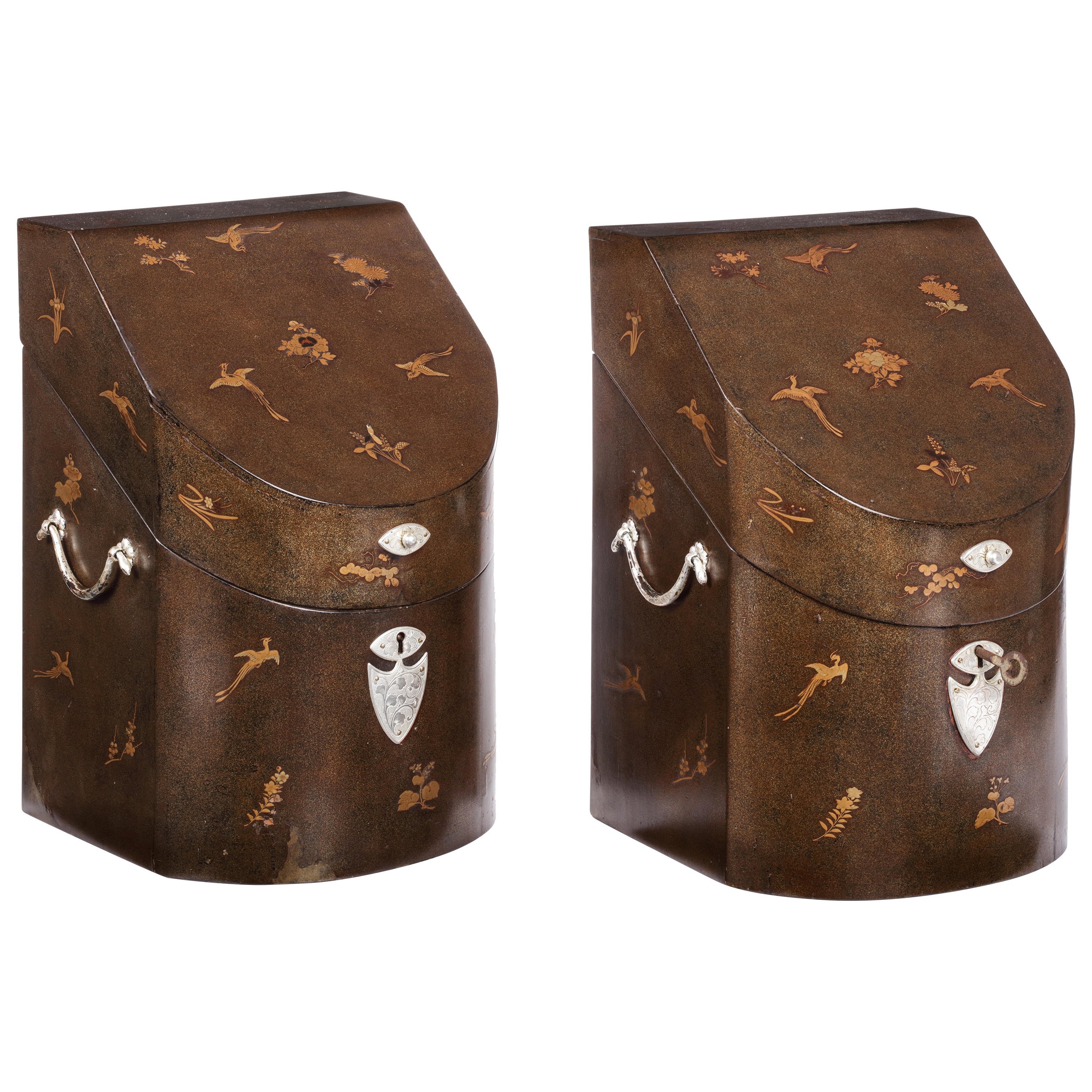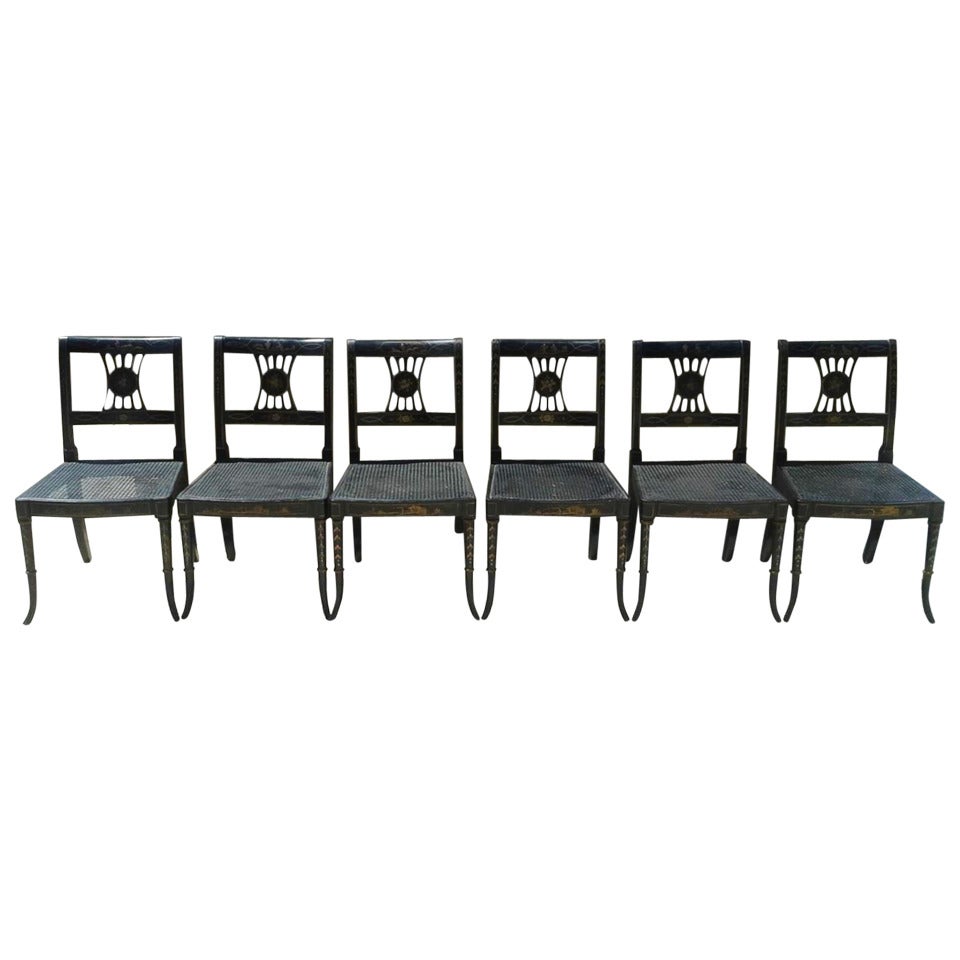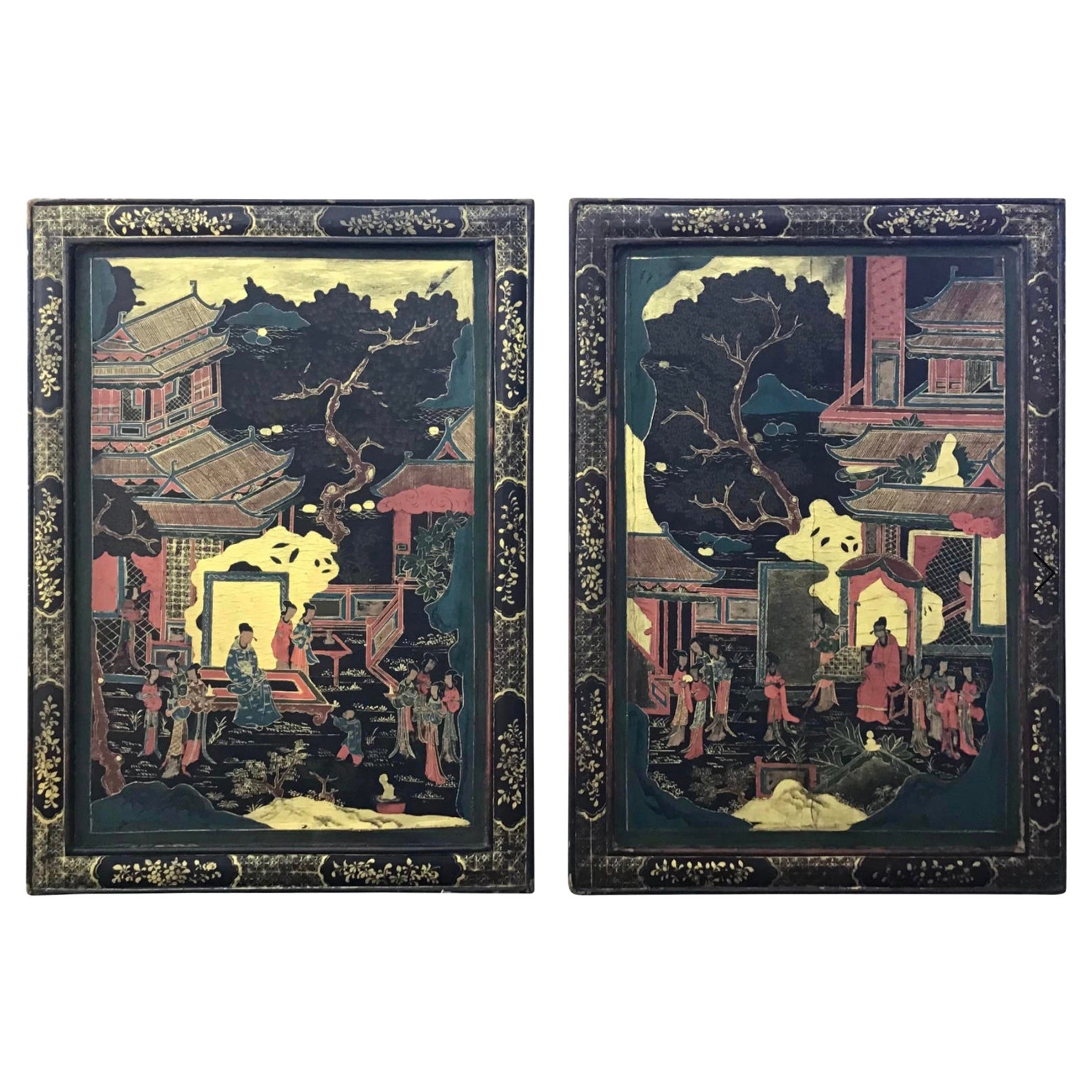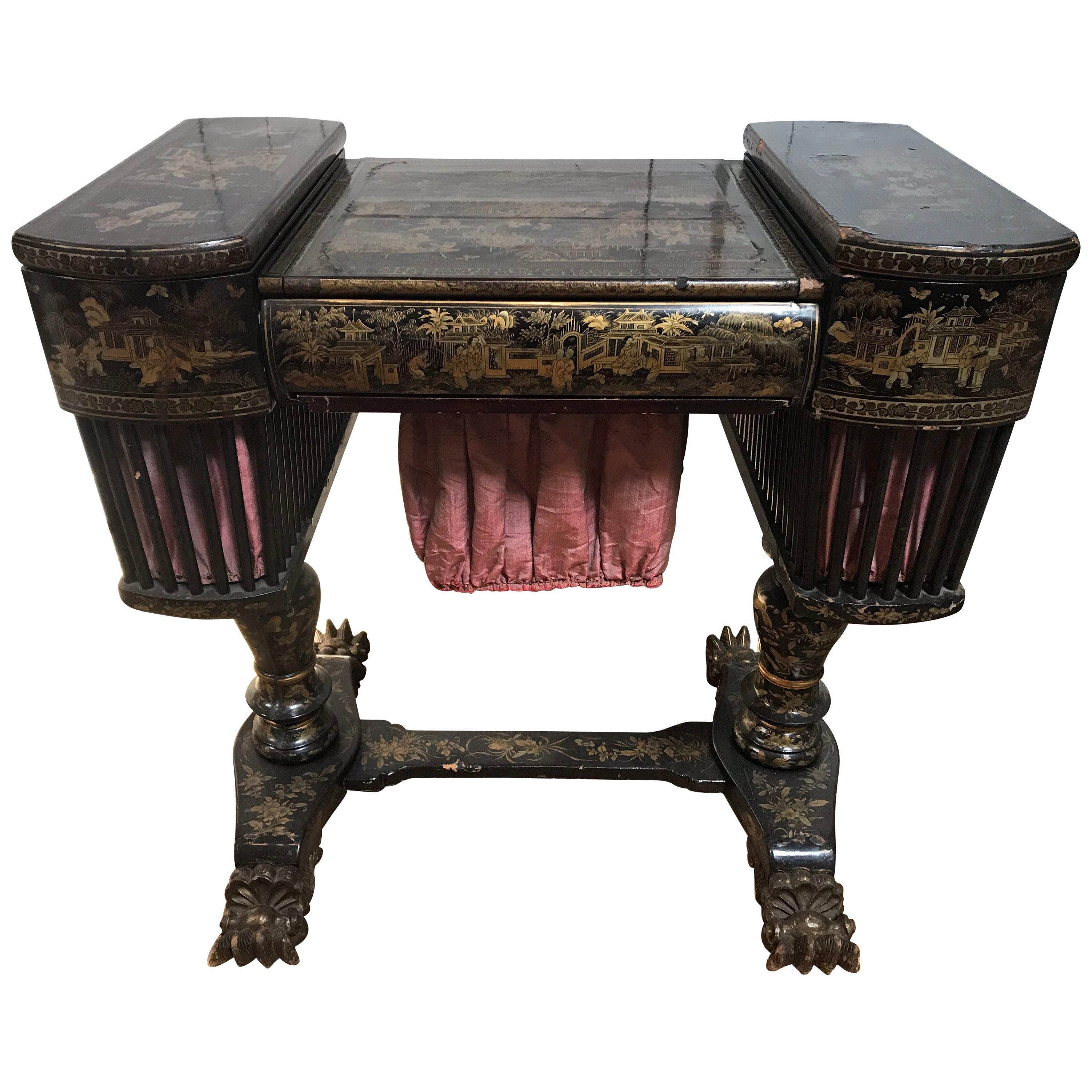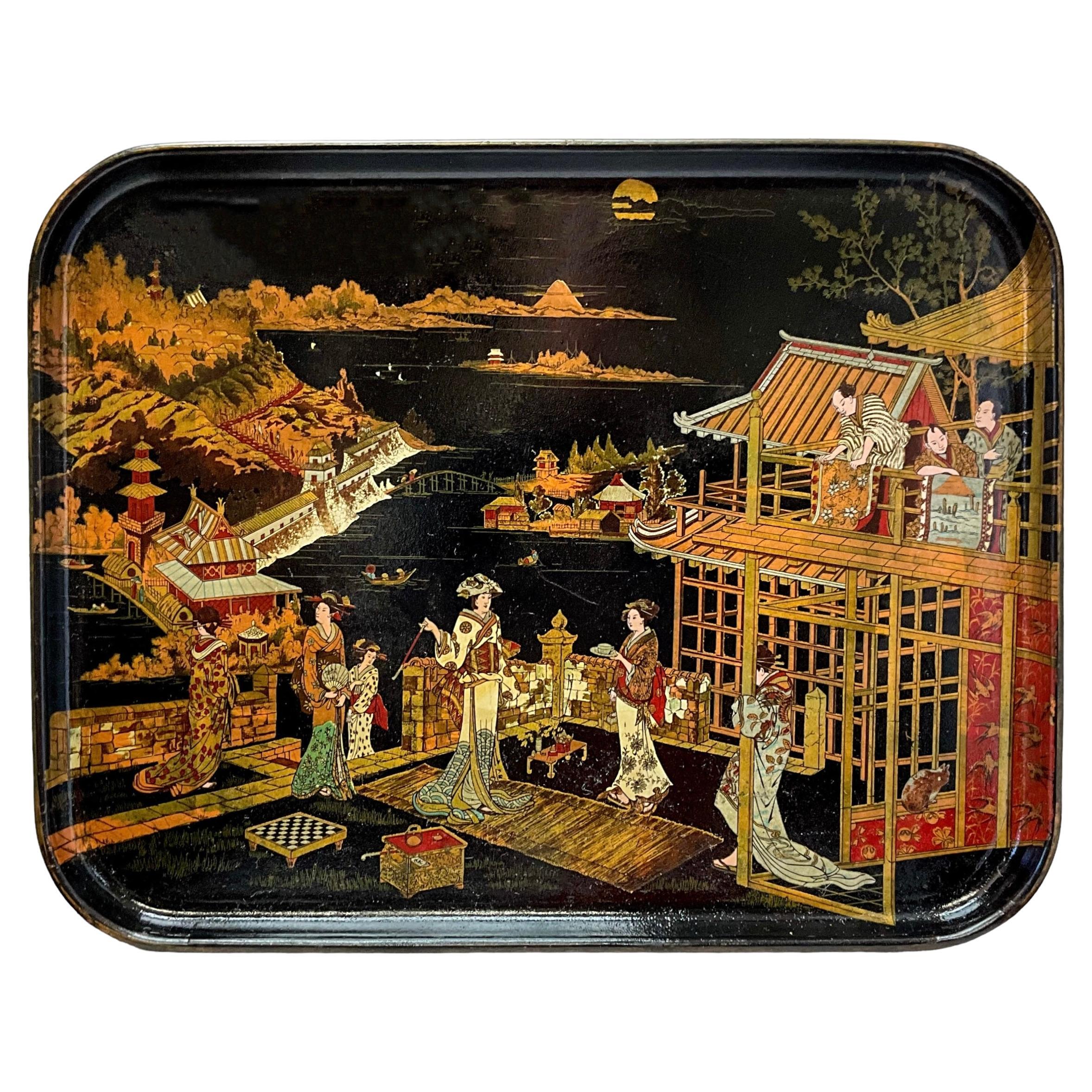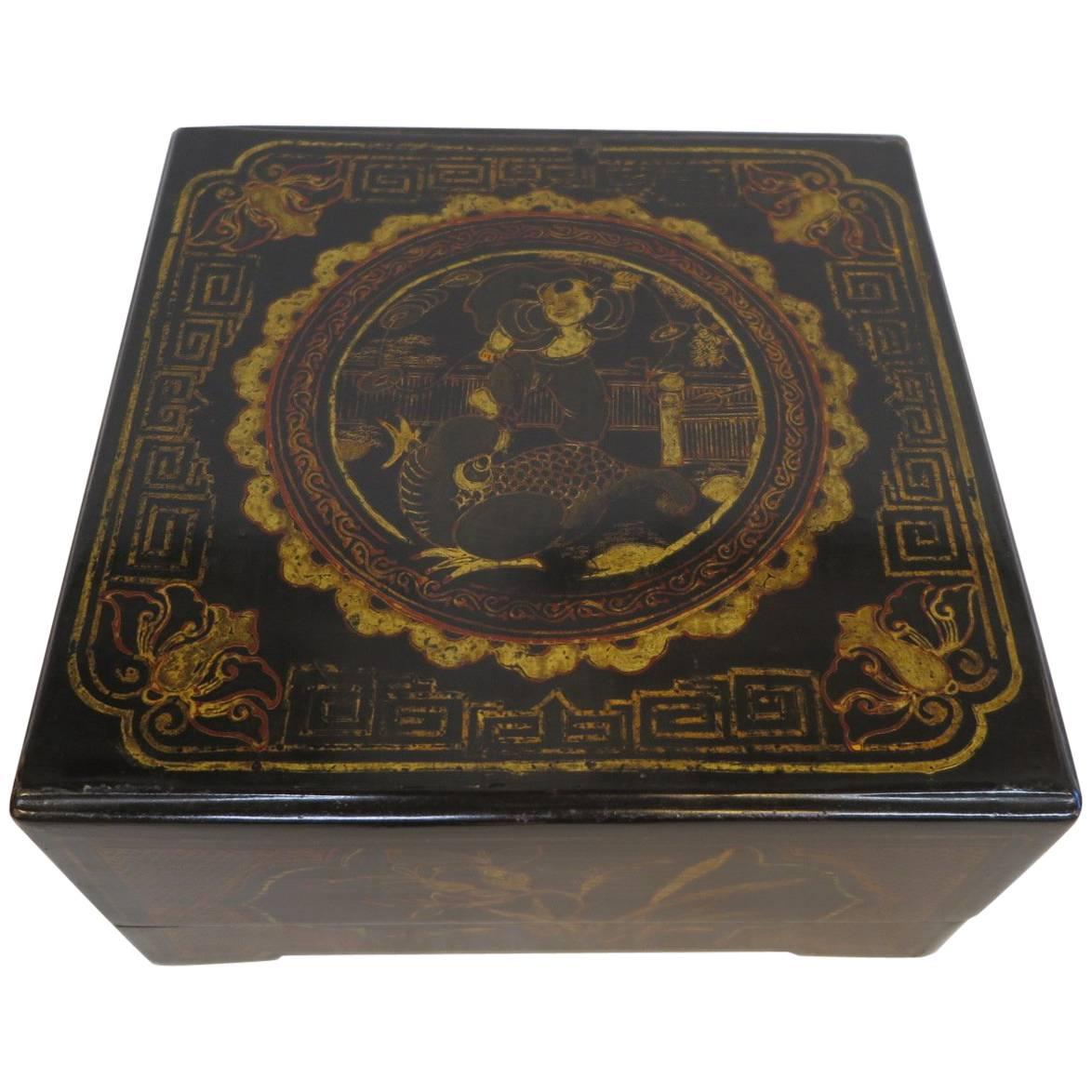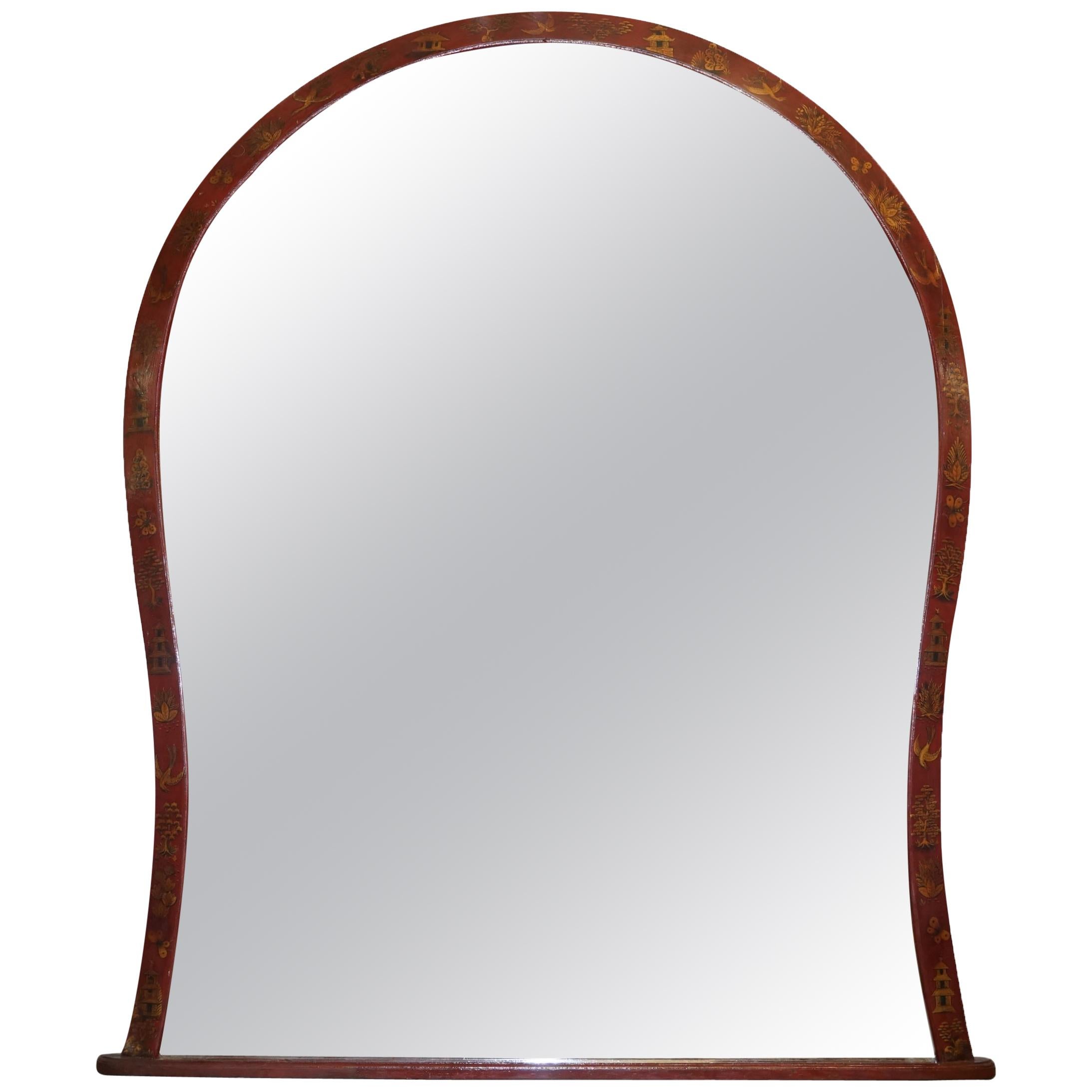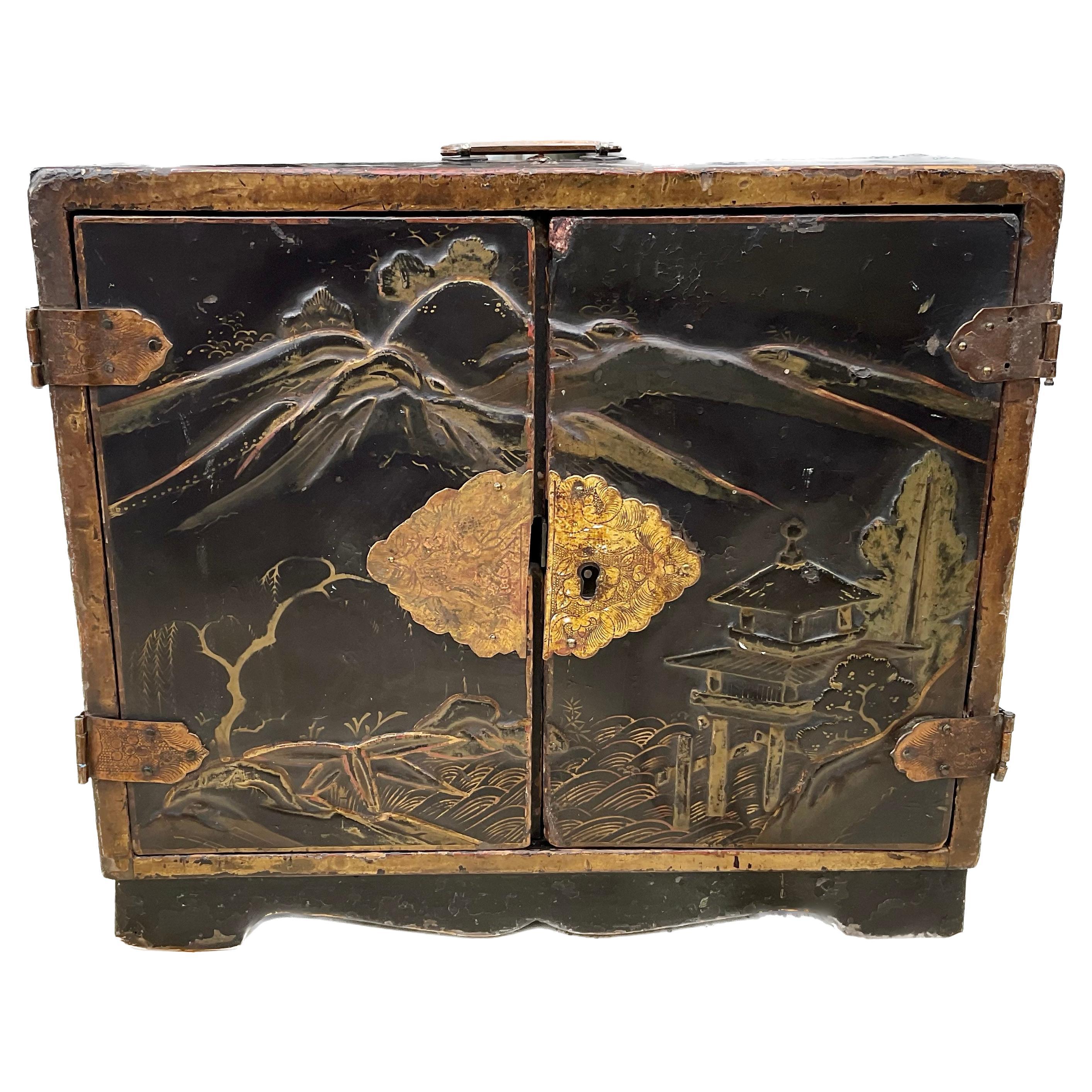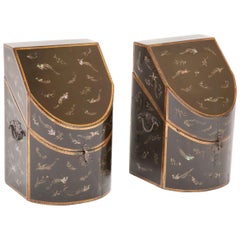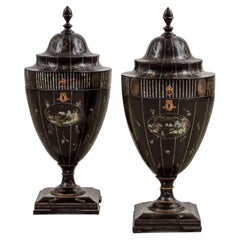
Pair of English Chinoiserie Knife Holders
View Similar Items
1 of 7
Pair of English Chinoiserie Knife Holders
About the Item
- Dimensions:Height: 26 in (66.04 cm)Diameter: 11 in (27.94 cm)
- Sold As:Set of 2
- Materials and Techniques:
- Period:1900-1909
- Date of Manufacture:1900
- Condition:
- Seller Location:Geneva, IL
- Reference Number:1stDibs: LU83025328313
You May Also Like
- Rare pair of Japanese Nagasaki Export Lacquered Wood Knife BoxesLocated in Stamford, CTRare pair of Japanese Nagasaki Export lacquered wood knife boxes with mother-of-pearl inlay of flowers and birds, now converted to letter boxes. The boxes were converted to letter b...Category
Antique Early 19th Century Japanese Anglo-Japanese Knife Boxes
MaterialsWood
- Pair of Fine Japanese Export Lacquer Cutlery Knife Boxes, 18th CenturyLocated in Amsterdam, NLA pair of fine Japanese export lacquered cutlery boxes Kyoto or Nagasaki, late 18th century H. 33.5 x W. 24 x D. 21 cm The bow-fronted boxes with sloping lids flat at the top are made of hinoki wood (Cypress), coated with Japanese paper and decorated in lacquer with scattered gold birds and flowers on a nashiji background. The Japanese mounts are made of copper and both boxes still have internal partitions to keep the cutlery upright. The form of these boxes is similar to a pictorial-style knife box in the collection of the Groninger Museum (inv. 1989- 347), dated between 1730 and 1780, but the style of the decoration is more like that on a knife box in the Peabody Essex Museum in Salem (inv. E62271), which was brought to Salem by James Devereux, Captain of the Franklin, in 1799. Provenance: Henriette Jeane Christine van Neukirchen, called Nyvenheim (1807- 1849) and Nicolaas Johan Steengracht van Oostcapelle (1806-1866), thence by descent to the last owners, Ludolphine Emilie baronesse Schimmelpenninck van der Oye (1944) married in 1969 to Roland Daniel van Haersma Buma (1944), the last residents of castle Duivenvoorden near Voorschoten and the great-great-granddaughter of Nicolaas Johan Steengracht van Oostcapelle. There is no evidence that Nicolaas Johan himself, or any of his or his wife’s ancestors had ever been in Japan. However, Nicolaas’ grandfather (Nicolaas Steengracht, 1754-1840) was a director of both the VOC and WIC (West Indies Company...Category
Antique Late 18th Century Japanese Lacquer
MaterialsSilver
- Pair of Japanese Lacquer and Mother-of-Pearl Inlaid Knife Urns, circa 1800-1815Located in Amsterdam, NLA rare pair of Kyoto-Nagasaki style lacquer and mother-of-pearl inlaid knife urns Edo period, early 19th century Measures: Height 71 x diameter 30 cm ?Formed as urns with vertically lifting covers and elongated finials, revealing fitted green velvet lined interiors for knives, decorated overall with birds, flowering stems, faux-fluting and oval panels with landscapes. The square plinth is raised on four bracket feet. Inside the lifting cover of one of the urns are Japanese characters, supposedly indications of some code by the craftsman. A closely related knife urn, now in the collection of the Peabody Essex Museum, Salem (inv. E 73115), was acquired in Nagasaki by Captain Samuel Gardner Derby of the Margareth of Salem in 1801. Captain Gardner Derby traded in Nagasaki under charter from the VOC (Vereenigde Oostindische Compagnie), the Dutch East India Company. Between 1797 and 1814 Holland was occupied by the French and from 1811 until 1816 Java by the English. During these periods practically no Dutch shipping was possible between Holland and Batavia (Jakarta) or between Batavia (Jakarta) and Nagasaki. To maintain a minimum amount of shipping between Batavia (Jakarta) and Nagasaki, between 1797 and 1807, the VOC chartered mainly American ships. American captains and officers ordered and bought mainly lacquered furniture in an American-English style, completely different from what the Dutch up till then had ordered. The present knife urns were possibly also ordered and acquired by Captain Gardner Derby during his stay in Deshima/Nagasaki in 1801. Another similarly neoclassical shaped knife urn in the collection of the Ashmolean Museum Oxford (inv. 1996.17) appears to be signed by woodworker Kiyotomo koreo tsukuru (Kiyomoto made this). The same name, together with an address in the Sanjo-Teramachi District of Kyoto, has been found inside a fragmentary urn in a private collection. This is an indication that European-style furniture was not only lacquered in Japan but made there as well. This undoubtedly is not only true for knife-urns, but all European- style furniture lacquered in Japan after circa 1800 was made by Japanese furniture makers...Category
Antique Early 19th Century Japanese Anglo-Japanese Lacquer
MaterialsBrass
$52,721 / setFree Shipping - Pair of English Georgian Chinoiserie Red Lacquered Wall MirrorsLocated in New York, NYPair of English Georgian (mid-18th Century) red lacquered and Chinoiserie decorated wall mirrors with gilt carved open pediment top with a centered cartouche. (Priced as Pair).Category
Antique 18th Century and Earlier English Georgian Wall Mirrors
MaterialsGold Leaf
- Set of Six English Chinoiserie Side Chairs. Circa 1820-30Located in Hollywood, SCSet of six English Chinoiserie black lacquered side chairs with Oriental figures, cane seats, and terminating on turned floral splayed legs. Dealers please call for trade price.Category
Antique 19th Century British Side Chairs
- Chinese Chinoiserie Decorated Lacquer Panels, a PairLocated in Bradenton, FLPair of stylish Chinoiserie panels in a lacquer finish, painted in gold, red & black with landscapes with village and people. The frame also decorat...Category
Antique 19th Century Chinese Chinese Export Lacquer
MaterialsLacquer
